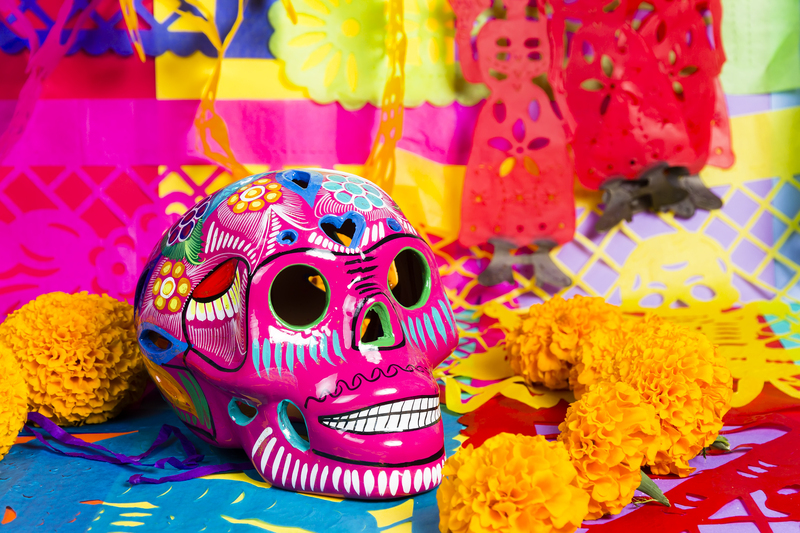Uncover the Untold Mysteries of Tulips with These Seven Facts
Posted on 19/08/2025
Uncover the Untold Mysteries of Tulips with These Seven Facts
Tulips are more than just vibrant flowers heralding the return of spring. They possess a captivating history, surprising symbolism, and intriguing biological secrets that often go unnoticed. In this comprehensive guide, we peel back the petals to unveil the secrets of tulips -- exploring their historical significance, unique characteristics, and surprising connections to culture and science. Read on to discover seven fascinating facts about tulips that will deepen your appreciation for these dazzling blossoms.

1. Tulips Were Once More Valuable Than Gold
One of the most astonishing mysteries in the history of tulips involves an economic phenomenon known as Tulip Mania. In 17th-century Holland, tulip bulbs became a symbol of wealth and exclusivity. During the early 1600s, tulips were traded like valuable commodities, with the price of certain rare varieties exceeding that of a luxury townhouse in Amsterdam!
Understanding Tulip Mania
- Peak Popularity: Around 1637, the market for rare tulip bulbs was at its zenith.
- Skyrocketing Prices: Traders and investors bought and sold bulbs at ever-increasing prices, sometimes signing contracts for future delivery.
- The Crash: The tulip bulb market crashed overnight, ruining speculators and plunging the economy into chaos.
Tulip Mania remains one of history's earliest recorded speculative bubbles, and its mystery lies in the intense fervor that surrounded what is today an everyday flower.
2. The Origin of Tulips: Central Asia's Wild Bloom
Contrary to widespread belief, tulips are not native to the Netherlands. Their roots trace back to the windswept steppes and mountainous regions of Central Asia. Wild tulip species are still found in places like Kazakhstan, Uzbekistan, and the foothills of the Himalayas.
How Did Tulips Travel to Europe?
During the Ottoman Empire, tulips were cultivated and admired for their beauty. The sultans fell in love with these flowers and used them as decorative motifs in art, poetry, and architecture. Turkish traders then introduced tulips to Europe, where their exotic charm captivated botanists and nobles alike.
- First tulips arrived in the Netherlands in the late 16th century.
- Cultivation began in official Dutch botanical gardens, spreading rapidly among the elite class.
Tulips' journey from remote Asian wilderness to the heart of European gardens is a story of allure, adventure, and centuries-old fascination.
3. Tulip Colors: Every Shade Hides a Secret Meaning
The vibrant palette of tulip blooms is not just pleasing to the eye--it's loaded with symbolism and hidden messages. Different tulip colors have been used for centuries to express feelings and convey messages without words.
The Language of Tulip Colors
- Red Tulips: Symbolize deep love and passion.
- Yellow Tulips: Represent cheerful thoughts, sunshine, and friendship.
- White Tulips: Convey forgiveness, respect, and purity.
- Purple Tulips: Associated with royalty and abundant prosperity.
- Black Tulips: The rarest of them all, standing for mystery and elegance.
Next time you see a bouquet of tulips, remember: each color blooms with its own secret meaning, making tulips not just a beautiful gift but also a thoughtful messenger.
4. Tulips Can Be Eaten--But Are They Safe?
One of the lesser-known mysteries of tulips is their role as emergency food. During World War II, the Dutch famine of 1944-45, known as the Hongerwinter, forced desperate citizens to turn to unconventional food sources. Tulip bulbs were boiled, baked, and ground into flour to stave off starvation.
Are Tulip Bulbs Edible?
- Tulip bulbs contain starches and can provide calories in times of need.
- They may also contain toxins that, if consumed in large quantities or prepared incorrectly, may lead to stomach discomfort.
While the petals of some tulip varieties are edible and even used to garnish salads in modern cuisine, it is always important to ensure that tulips are grown organically and to consult food safety sources before consuming any part of the plant.
5. Endless Varieties: The Science Behind Tulip Diversity
Tulips are celebrated for their breathtaking diversity. There are over 3,000 registered tulip cultivars across more than 75 wild species. The Netherlands is now home to the world's largest tulip industry, producing billions of bulbs each year for both domestic and international markets.
Why Are There So Many Different Tulips?
- Natural Hybridization: Tulip species interbreed naturally, resulting in novel color and shape combinations.
- Selective Breeding: For centuries, horticulturists have cross-pollinated tulips to create new hybrids with desirable traits such as unique colors, longer stems, and disease resistance.
- Genetic Mutations: Occasionally, spontaneous mutations result in fascinating new patterns--like the striped 'Rembrandt' tulips, which were later discovered to be caused by a harmless plant virus.
The seemingly endless diversity among tulips is both a product of nature and human ingenuity, making them one of the most varied flowers on earth.
6. Tulips Are More Than Just Decorative
In addition to their aesthetic appeal, tulips play a unique role in agriculture and the environment. They serve as important pollinator plants for early spring bees and other insects. Furthermore, tulip festivals have a significant impact on local economies and tourism, drawing millions of visitors every year--especially in countries such as the Netherlands, Turkey, and Canada.
Other Uses for Tulips
- Medicinal Research: Some tulip extracts show promise for use in traditional herbal medicine, particularly in Central Asia.
- Natural Dyes: Tulip petals can provide gentle, natural coloring for crafts and textiles.
- Eco-friendly Landscaping: Their hardy bulbs are ideal for low-water gardens and sustainable public parks.
Tulips are not only symbols of beauty and renewal; they are also working plants with subtle but significant contributions beyond the flowerbed.
7. Tulip Festivals: A Global Celebration
Few flowers inspire as much celebration as the tulip. Annual tulip festivals around the world create dazzling botanical displays, cultural showcases, and vibrant community activities. These events are not only a feast for the eyes but also a living testament to the tulip's enduring global fascination.
Noteworthy Tulip Festivals
- Keukenhof Gardens (Netherlands): Known as the "Garden of Europe," Keukenhof hosts millions of tulips in bloom each spring.
- Istanbul Tulip Festival (Turkey): Turkey celebrates its floral heritage with elaborate displays throughout the city's public parks.
- Canadian Tulip Festival (Ottawa): Stemming from World War II history, this festival highlights friendship and gratitude between Canada and the Netherlands.
- Skagit Valley Tulip Festival (USA): Washington State welcomes visitors from all over to witness fields ablaze with color.
Each tulip festival is its own universe of art, tradition, and cultural pride, inviting everyone to experience the magic and untold mysteries of tulips up close.

Frequently Asked Questions About Tulips
Why are tulips so important in Dutch culture?
The Netherlands' association with tulips began with "Tulip Mania" and evolved into a centuries-long tradition of breeding, growing, and exporting tulips. The flower is now a national symbol, representing Dutch innovation, craftsmanship, and natural beauty.
How long do tulips bloom?
The typical tulip bloom lasts for one to two weeks in spring. With careful selection of different tulip species and varieties, gardeners can enjoy continuous color from early March to late May.
Can tulips grow in pots or indoors?
Yes! Tulips can thrive in containers, provided they have well-draining soil and are placed in a cool, sunny location. Many people "force" tulip bulbs to flower indoors in the winter for a preview of spring.
What do black tulips symbolize?
Black tulips--rare and captivating--often symbolize mystery, power, and uniqueness. Their near-mythical status has inspired artists, writers, and garden enthusiasts for centuries.
Conclusion: The Timeless Allure and Mystique of Tulips
From their wild Central Asian origins to their global fame today, tulips have sparked economic frenzies, led cultural revolutions, and inspired awe with their diversity and beauty. Their colors speak hidden languages, their history weaves through empires and economies, and their blooms remind us each spring of nature's endless creativity.
As you stroll past a tulip garden or bouquet, reflect on these seven untold mysteries--and let the humble tulip surprise you again and again. Whether you're a gardener, traveler, or history lover, there's always more to uncover in the colorful world of tulips.
Ready to plant your own tulip story? Share your experiences and favorite facts below!
- Tulip mysteries await in your garden, your city's parks, and the unfolding pages of horticultural history--will you discover them all?
Latest Posts
Experience the Artful Science of Caring for Orchids
Learn What Your Birth Flower Expresses About Your Nature
Top 12 Flowers That Will Brighten Your Home for Longer
Uncover the Untold Mysteries of Tulips with These Seven Facts






